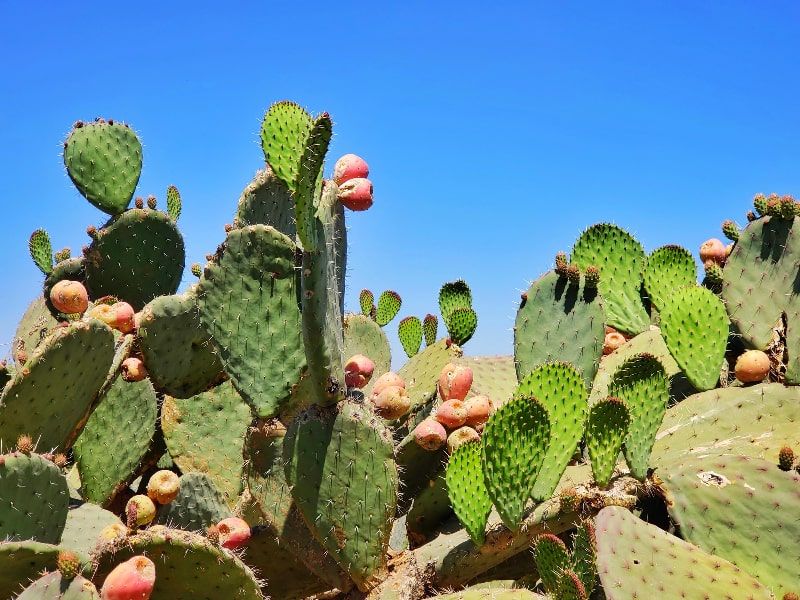Thousands of products from nature are beneficial to humans
Medicines, herbicides, insecticides, and fungicides are obtained from molecules and extracts of plants, microorganisms, and animals. In Mexico, there are 25,000 to 30,000 species from which millions of compounds can be obtained.

In Mexico there is potential for the chemical study of natural products, plus the fact that it is the fifth megadiverse country in the world and has 25,000 to 30,000 local plant species; that is, ten percent of the plants on the planet, said Baldomero Esquivel Rodríguez, a researcher at the Institute of Chemistry (IQ) of UNAM, Mexico's National Autonomous University of Mexico (UNAM).
It is estimated that a plant has in its genes the capacity to biosynthesize five to fifteen thousand natural products. Some of these genes are expressed under certain environmental conditions and others remain "silent".
Based on this data, if we multiply five thousand (the lowest number of what is estimated to be biosynthesized) by 25 thousand (the lowest number of plants in the nation), we potentially have at least 125 million possible natural products. However, with current techniques we are still far from being able to isolate and characterize such a large number, he said.
Biodiversity, from the point of view of chemistry, is superior in terms of the number of species and is something that science must take advantage of.
Ten percent of the Earth's flora develops and evolves in Mexico, as well as has high percentages of endemism (local species), for example, up to 54.9 percent in the case of conifers. Moreover, it is estimated that in Mexico there are between 3,500 and 4,000 species with some medicinal use.
It is estimated that 50 percent of the drugs used in the world are natural products, analogs, derivatives, or inspired by them, i.e., the natural chemical structure was copied to make new molecules. Apart from drugs such as antibiotics, analgesics, and anti-inflammatory drugs, among others, they also contain compounds of agronomic interest, which have been used to produce herbicides, insecticides, and fungicides.
An important role of compounds created by plants is related to their defense mechanisms against their main predators, or the attraction of pollinators and dispersers. Many people are familiar with the existence of antibiotics generated by some microorganisms, which affect the development of others. Meanwhile, animals produce compounds that repel or attract other species, thus determining reproduction or allowing the marking of territories and paths.
Some of their functions are: to act as hormones (such as gibberellins), respond to infections (phytoalexins), and protect against ultraviolet rays (quinones and flavonoids), antioxidants and pigments (flavonoids), and allopathic (mono and sesquiterpenes). From all these compounds, chemists have extracted or copied molecules that are now industrialized and used commercially.
Among the compositions that have been of interest to humans are morphine (which is an analgesic), ephedrine (vasoconstrictor, useful for bronchial treatment), and salicin (powerful analgesic and antipyretic from which aspirin is derived). Also, strictin (poison), geraniol (for perfumes), caffeine (stimulant), and vincristine (antileukemic).
The therapeutic properties of bioactive natural products have been of great benefit to humans since prehistoric times. At the beginning of the modern era of Western medicine (early 19th century), chemists began to analyze medicinal plants or plants of commercial interest.
According to the web page of the Secretariat of Agriculture and Rural Development, some examples of medicinal plants are arnica, which is used to treat inflammatory conditions and bruises, contusions, sprains, rheumatic problems, wounds, hematomas, and pain; peppermint, useful to treat nausea, vomiting, and gastrointestinal disorders.
Also, chamomile is beneficial to treat fever, inflammation, muscle spasms, menstrual disorders, insomnia, ulcers, wounds, gastrointestinal problems, rheumatic pain, and hemorrhoids; aloe, a plant that has antifungal, antiseptic, antiviral, antibacterial, anti-inflammatory, antioxidant and wound-healing effects, which has become an attractive crop in the field of biomaterials.
Nopal cactus helps regulate blood sugar levels, combat gastritis, reduce weight, and heal small wounds; in syrup form, it helps reduce coughs. In the last quarter of the 19th century, studies began on the existence of chemical substances that mediated the growth of vegetables, based on experimental observations.
Thus, research and experiments were carried out on roots and leaves, which later led to the isolation of indole-3-acetic acid at the beginning of the 20th century. This substance and its effect on plant growth was the basis for the development of 2,4-D, one of the most important herbicides produced during the last century.
Natural products, of microbial origin, have also been a source for the manufacture of herbicides, such as Phosphinothricin (trade name glufosinate), which is used to control a wide range of weeds in agriculture.
The use of synthetic insecticides, such as DDT, applied for more than 50 years, despite its local efficiency, caused significant damage to the environment, but has been replaced by new insecticide molecules that do not generate toxic effects, are more specific, and target the insects that attack the crops on which we feed, said the university professor. Many of these new chemicals are inspired by natural products, such as pyrethroids.
Although it is difficult to isolate them in the laboratory, in 81 years of existence at the Institute of Chemistry (IQ) of the UNAM, between 850 and 900 plant species have been studied, and an estimated three thousand natural compounds have been described. Since the IQ was founded in 1941, through research thousands of substances have been isolated and characterized from species belonging to different families of plants, marine organisms, and insects and, recently, from fungi and bacteria.
The findings include terpenoids, sterols, flavonoids, alkaloids, acetogenins, among others, and studies on chemical reactivity. In recent decades, additional contributions have been made to the different biological properties of natural products, mechanisms of action, and molecular recognition.




